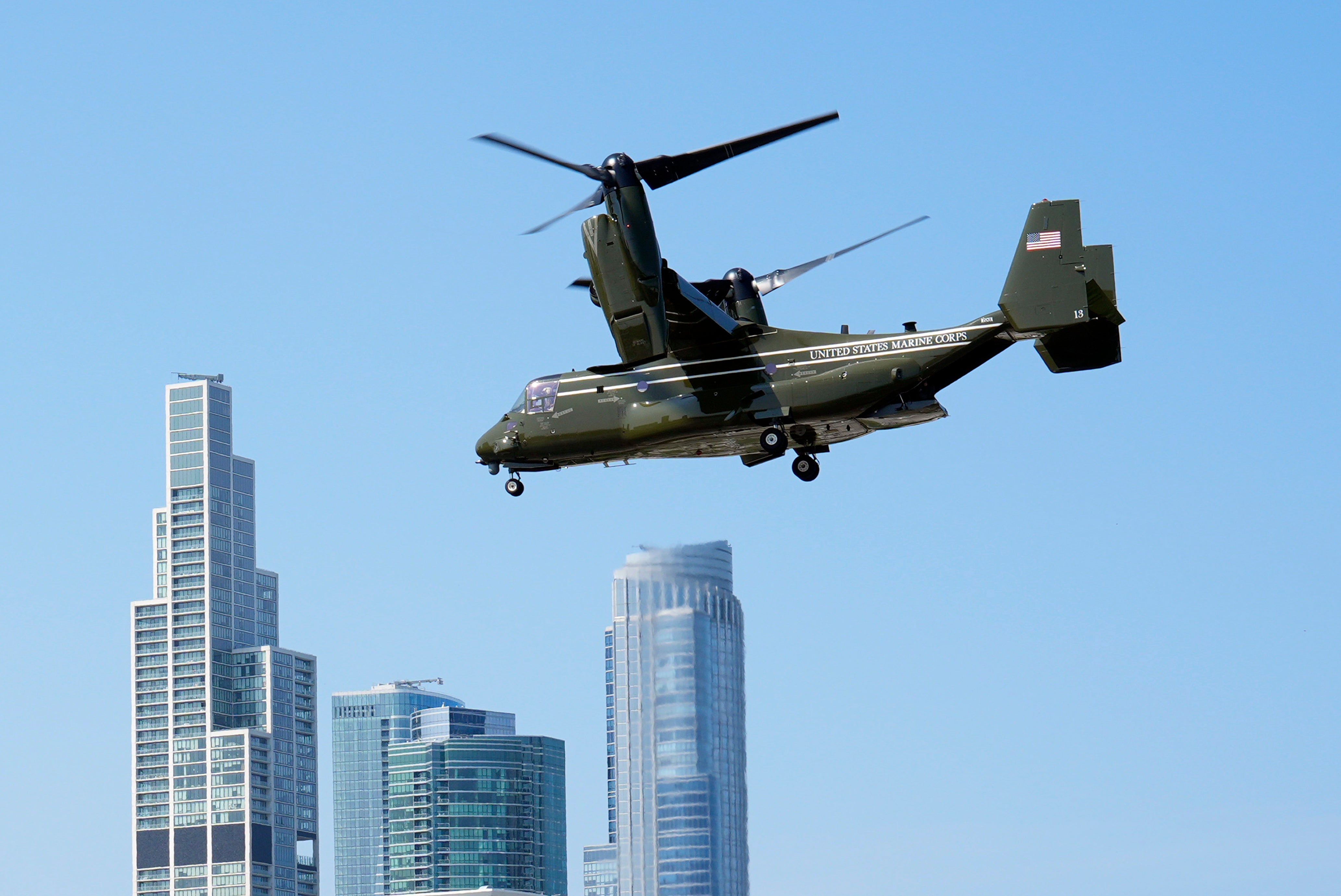Flights for military Osprey helicopters are paused after more problems are found in its parts
The Pentagon is temporarily pausing operations again of its V-22 Osprey fleet after weakened metals inside one of the aircraft broke apart in flight in November, causing an engine failure and a near crash in New Mexico

Your support helps us to tell the story
From reproductive rights to climate change to Big Tech, The Independent is on the ground when the story is developing. Whether it's investigating the financials of Elon Musk's pro-Trump PAC or producing our latest documentary, 'The A Word', which shines a light on the American women fighting for reproductive rights, we know how important it is to parse out the facts from the messaging.
At such a critical moment in US history, we need reporters on the ground. Your donation allows us to keep sending journalists to speak to both sides of the story.
The Independent is trusted by Americans across the entire political spectrum. And unlike many other quality news outlets, we choose not to lock Americans out of our reporting and analysis with paywalls. We believe quality journalism should be available to everyone, paid for by those who can afford it.
Your support makes all the difference.The Pentagon is temporarily pausing flights of its fleet of V-22 Ospreys again after more design issues were found - this time in connecction to a near crash in November.
The pause was recommended last week “out of an abundance of caution” by Vice Adm. Carl Chebi, the head of Naval Air Systems Command, which runs the Osprey program for the military, said command spokeswoman Marcia Hart.
The Marine Corps, Navy and Air Force are adhering to the recommended pause, each said in a statement to The Associated Press. The Marines said its pause began on Friday and would run at least through Monday. The other services are expected to maintain their pauses longer as they look at the cause of the metal failures.
An in-depth investigation into the Osprey by The AP published last month found that safety issues have increased in the past five years, parts are wearing out faster than expected and that the design of the aircraft itself is directly contributing to many of the accidents. The Osprey can fly both like a helicopter and an airplane.
Following that report, lawmakers sent a letter to Defense Secretary Lloyd Austin asking him to reground the Osprey fleet until solutions can be put in place to address safety and design issues identified by the AP.

The latest near crash, at Cannon Air Force Base in New Mexico on Nov. 20, had similarities to a crash off the coast of Japan in November of last year that killed eight Air Force Special Operations Command service members.
In the Japan crash, inclusions — or weakened spots — in the metal used for critical gears inside the Osprey’s transmission led to the gearing falling apart inflight and a cascading catastrophic failure of the aircraft. At the time the crew did not realize the seriousness of the failure and did not immediately land.
Lessons from that fatal Japan crash may have saved lives in the latest emergency. While the investigation is not complete, the crew in the Cannon flight received similar warnings shortly after takeoff and lost an engine but was able to quickly put the Osprey back on the ground and survive.
An initial review of the part that broke apart at Cannon has found that similar metal weaknesses may have played a role, but in a different part than what failed in the Japan crash.
Based on NAVAIR’s recommendations, Lt. Gen Michael Conley, AFSOC commander, directed a pause for all Osprey training flights, “which allows time and space for us to understand what happened,” Lt. Col. Becky Heyse, command spokeswoman, said in a statement.
The metal in question is called X-53 VIMVAR. In the Japan crash investigators found that the metal gear that failed had multiple inclusions, or microscopic weak spots in the metal caused by foreign substances getting mixed in during the manufacturing process. Those weak spots can lead to fatigue cracking.
After the Japan crash, investigators reported that there have been seven previous cracking incidents in gears that were likely caused by the same metal weakness.
Since then, the military and Bell Flight, which builds the transmission system and assembles the Osprey at its factory in Amarillo, Texas, have pressed for ways to make that metal stronger.
Since the military started flying the aircraft three decades ago, 64 personnel have been killed and 93 injured in crashes. Japan’s military briefly grounded its fleet again in October after an Osprey tilted violently during takeoff and struck the ground.